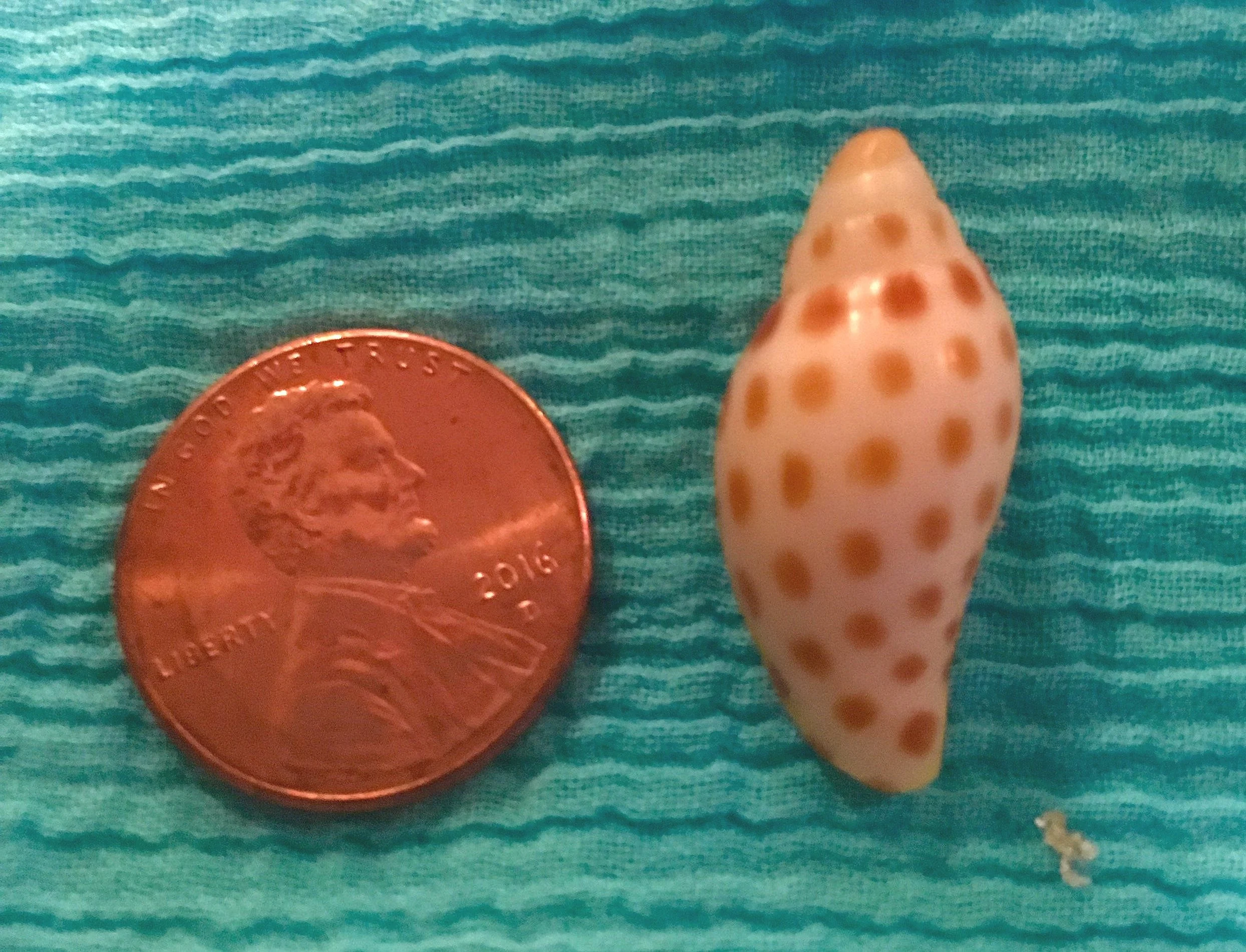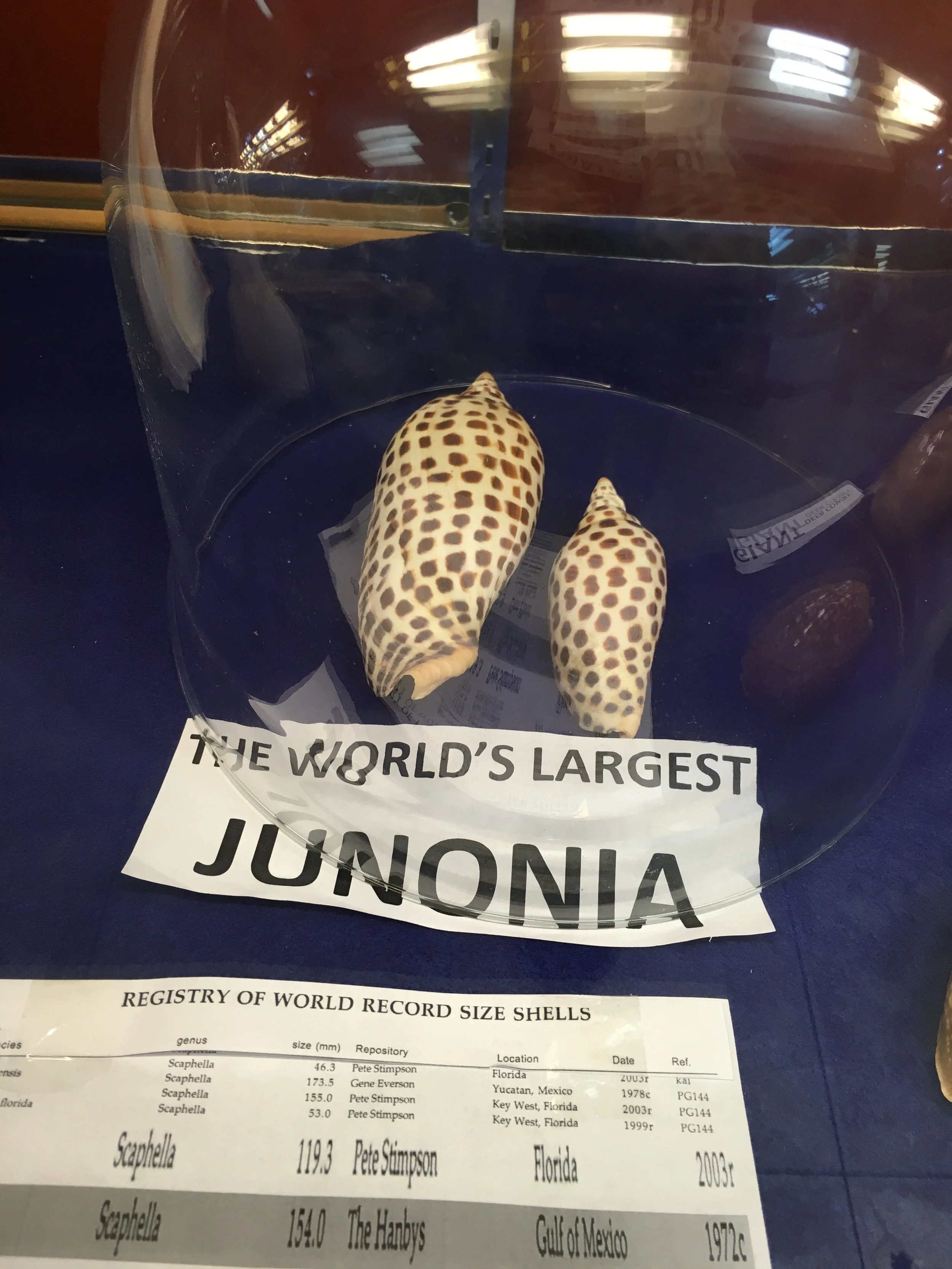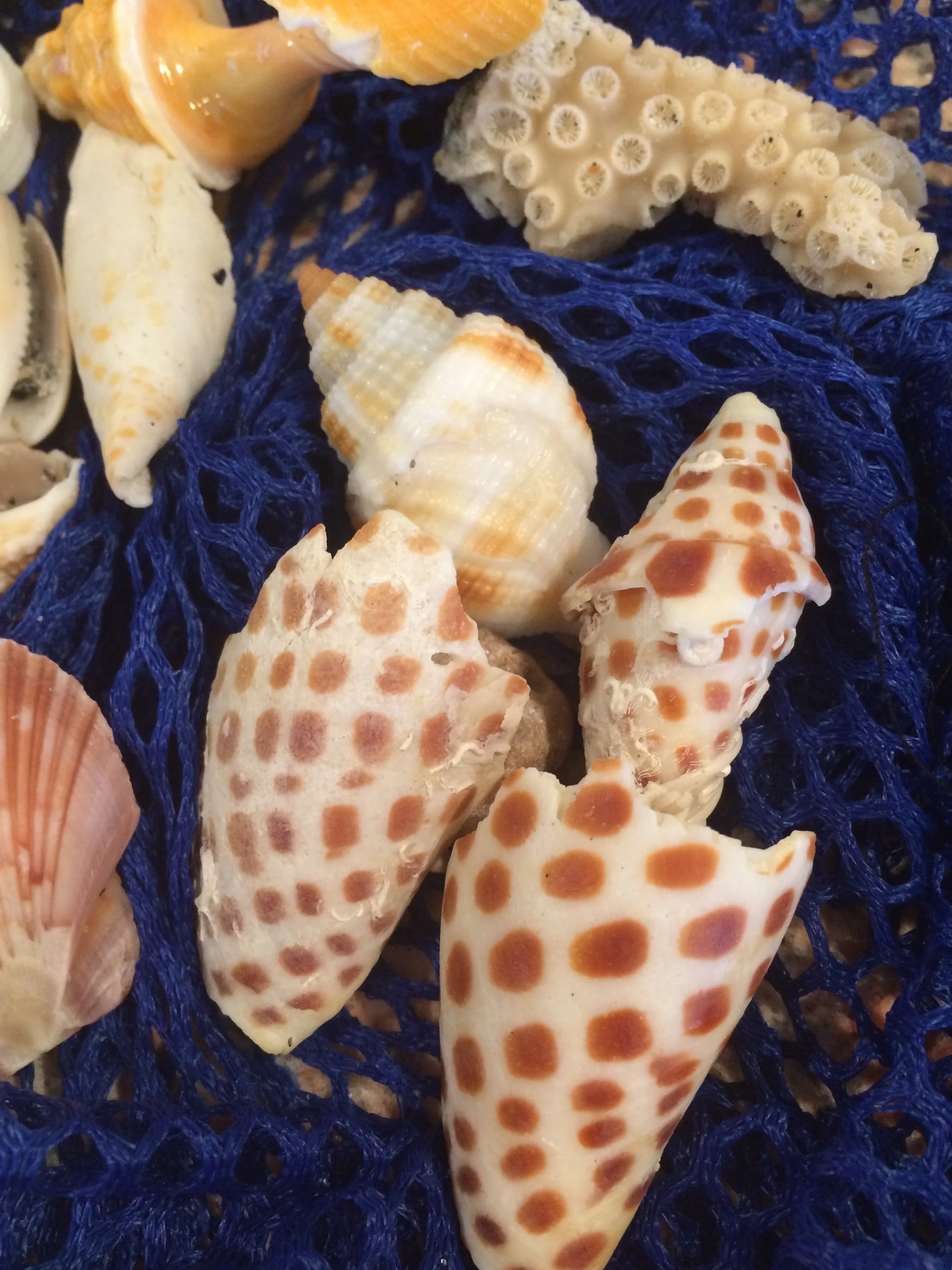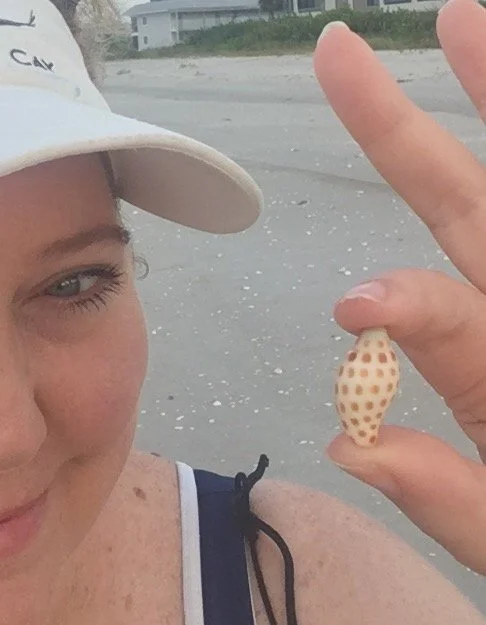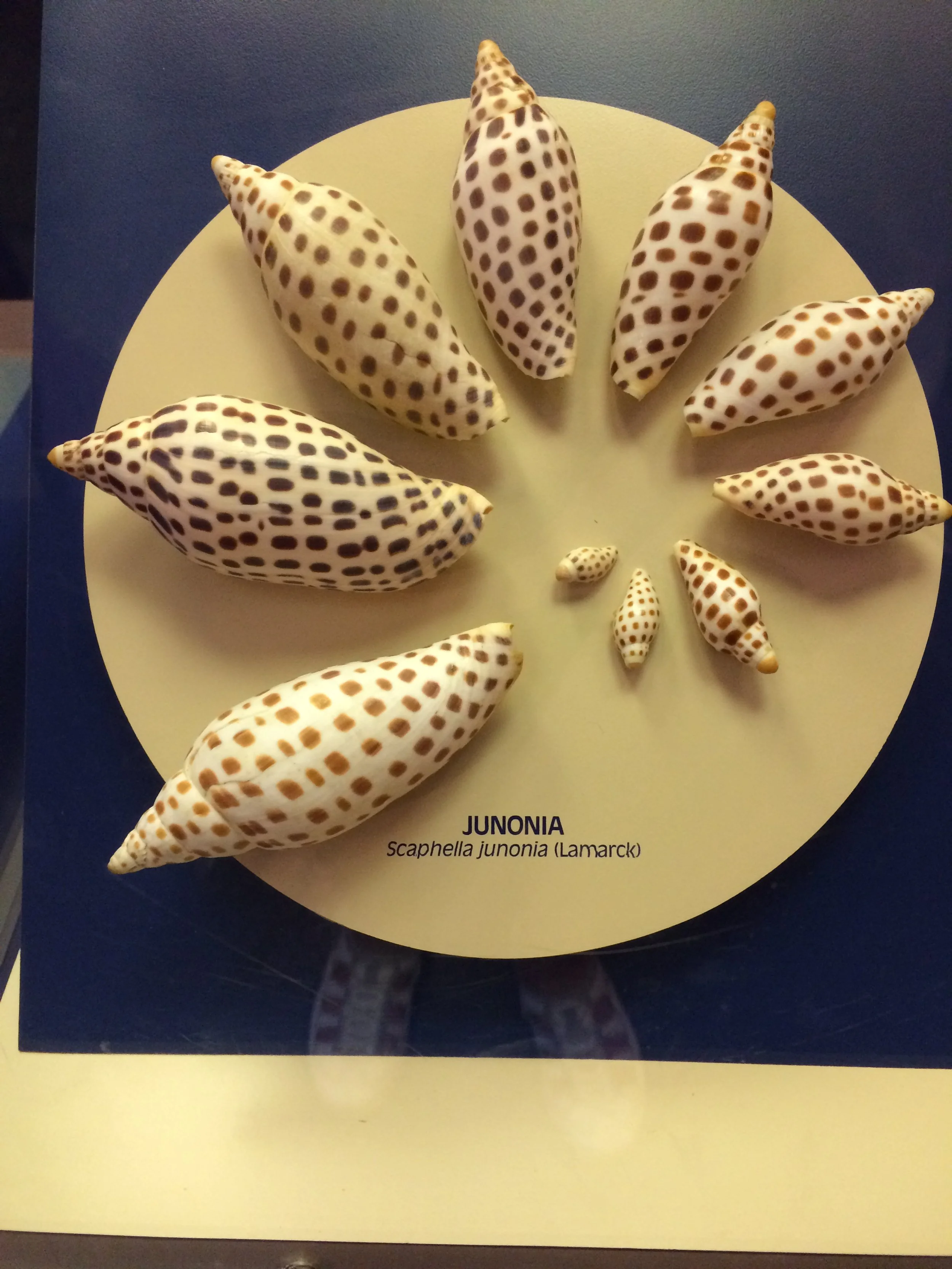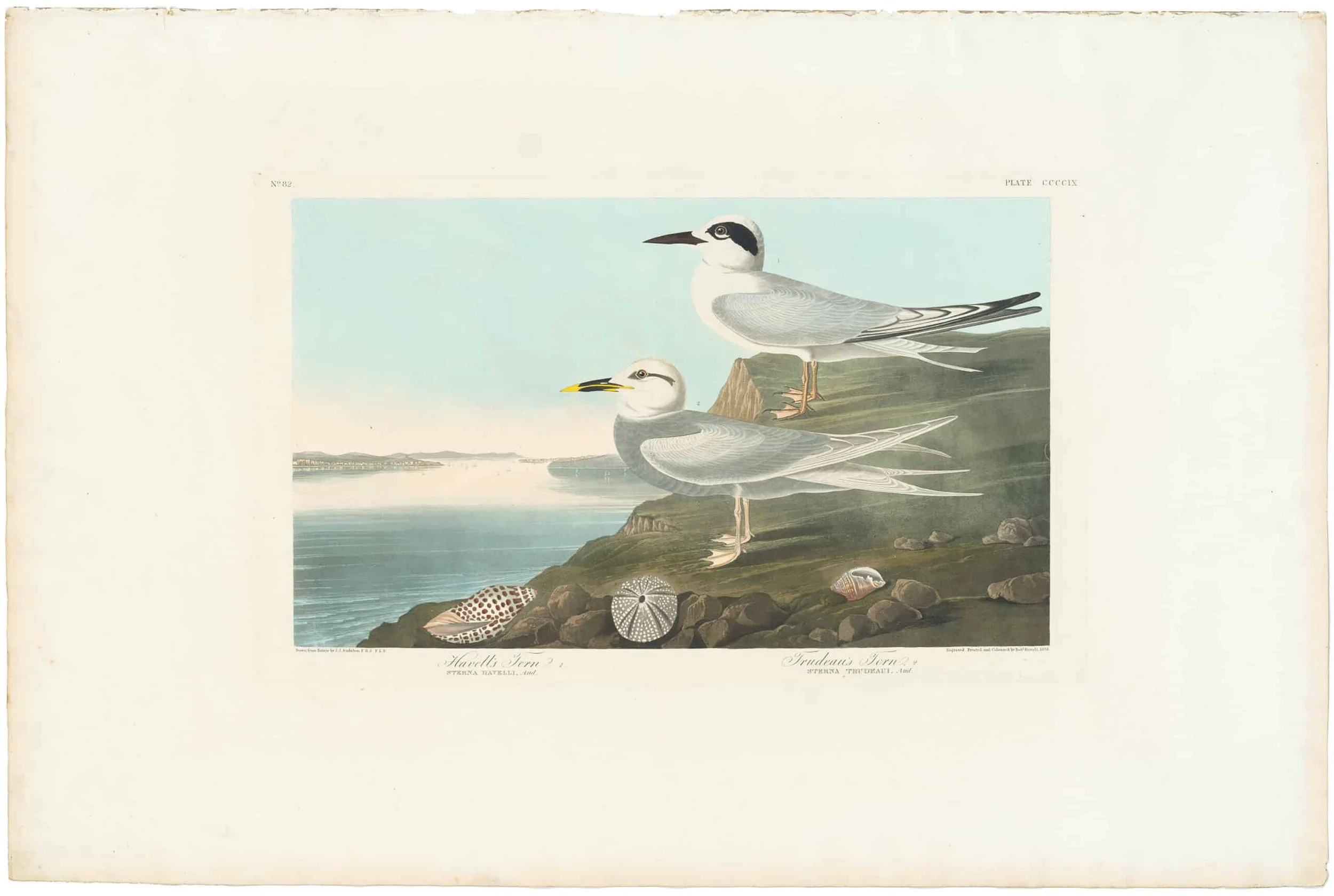Junonia Shells, a History and a World Record
For shellers and shell collectors, the junonia is a sought-after specimen. For starters, its appearance is beautiful, a cream-colored volute shell with rows of brown squarish spots, and secondly, it’s rare to find one on the beach or even close to shore, especially in one piece.
Why Are Junonias Rare?
Junonia sea snails spend their life in deep water, anywhere from 98 to 426 feet (30-130 meters). That’s deep! Even if you were a certified PADI Scuba Diver, your max depth would be 40 feet; maximum depth for a certified PADI Open Water Diver is 60 feet. That’s still not deep enough!
These attractive gastropods crawl along the ocean floor, eating lettered olives (as we learned at the Bailey-Matthews National Shell Museum). Once the snail dies, its shell either stays buried or it has to travel a long way to make it ashore. Storms help bring them the distance, but now you understand why finding them in one piece is so amazing!
A baby junonia found behind the Caribe Resort on Sanibel after sunset.
World Record Junonia
Junonias can be accidentally dredged up by shrimp trawlers, a “bycatch” of the industry. This is how many shell collectors attain their specimens – in fact, the WORLD’S LARGEST JUNONIA was dredged up by a shrimp trawler! It was 1972 and the gorgeous intact junonia measured over 6 inches in length (154mm). It went to a collector in Jacksonville but upon his death, local shell collector, Larry Strange purchased the collection, which included the world-record junonia. Larry owned the shell store at 1544 Periwinkle Way on Sanibel, Seashells dot com. If you visited before Hurricane Ian, you would have seen his record-setting junonia under a big glass dome by the register. I ogled it many times!
The World’s Largest Junonia, kept under a glass dome at the former Seashells Dot Com shop on Sanibel.
Origin of the Name, Junonia
In the world of shell collecting, its binomial name is Scaphella junonia (Lamarck, 1804). Famous French naturalist and biologist, Jean-Baptiste Lamarck, first discovered the junonia, and 1804 was the year. So, when you discover a new subspecies, YOU get to name the shell!
Lamarck named the Junonia after the Roman mother of the Roman gods, Juno (Hera in Greek mythology). Juno was the protector of marriage, families, and children. She was married to Jupiter (Zeus in Greek mythology), and together they ruled Mount Olympus. Now that I know this, I love the name even more.
New Varieties of Junonia
There are at least six subspecies of Junonias, with the most recent just recorded in 2023! Here is how it is labeled: Scaphella junonia glicksteinorum (Petuch & Berschauer, 2023). Amazing, right?
Where To Find Junonias
Junonias can be found in the Gulf of Mexico from Florida to Texas, and in the Western Atlantic, including the east coast of Florida and the Yucatan Peninsula. The State Shell of Alabama is the subspecies, Scaphella junonia johnstoneae (Clench, 1953).
Luck Will Find You
It took 25+ years of hunting to find my first junonia, a moment I will always remember. I now have seven in my collection but only two are completely whole. If you haven’t found your first junonia, I hope to welcome you into the “J Club” soon!
Two broken junonias in one day on Captiva.
That’s me with my baby junonia!
Junonias formerly on display at the Bailey-Matthews National Shell Museum.

